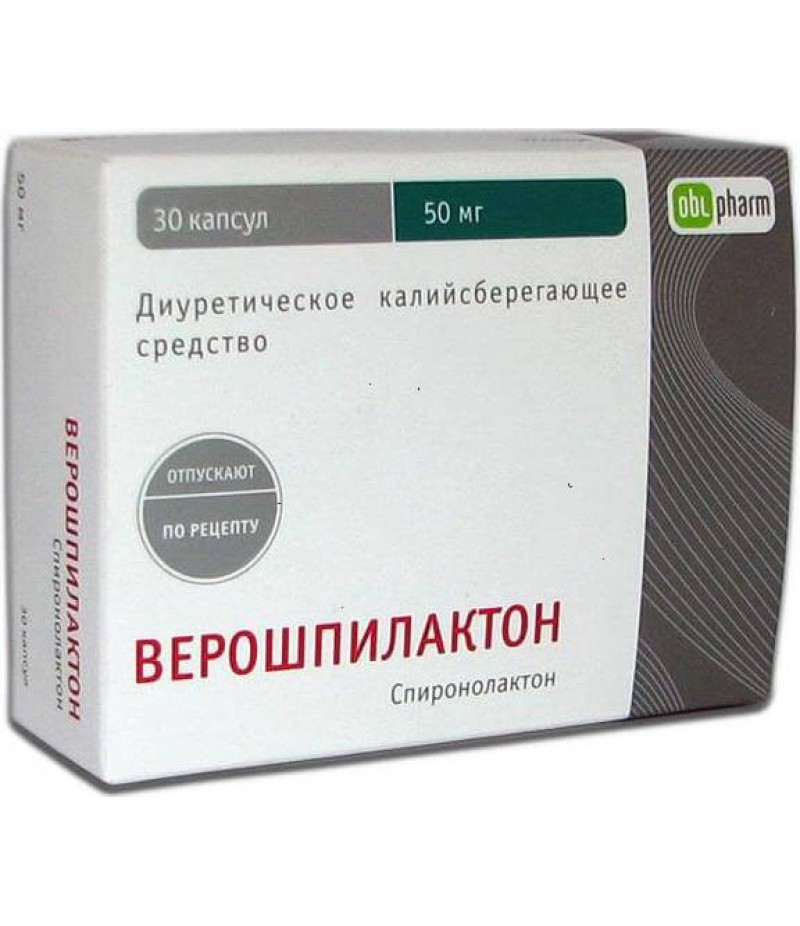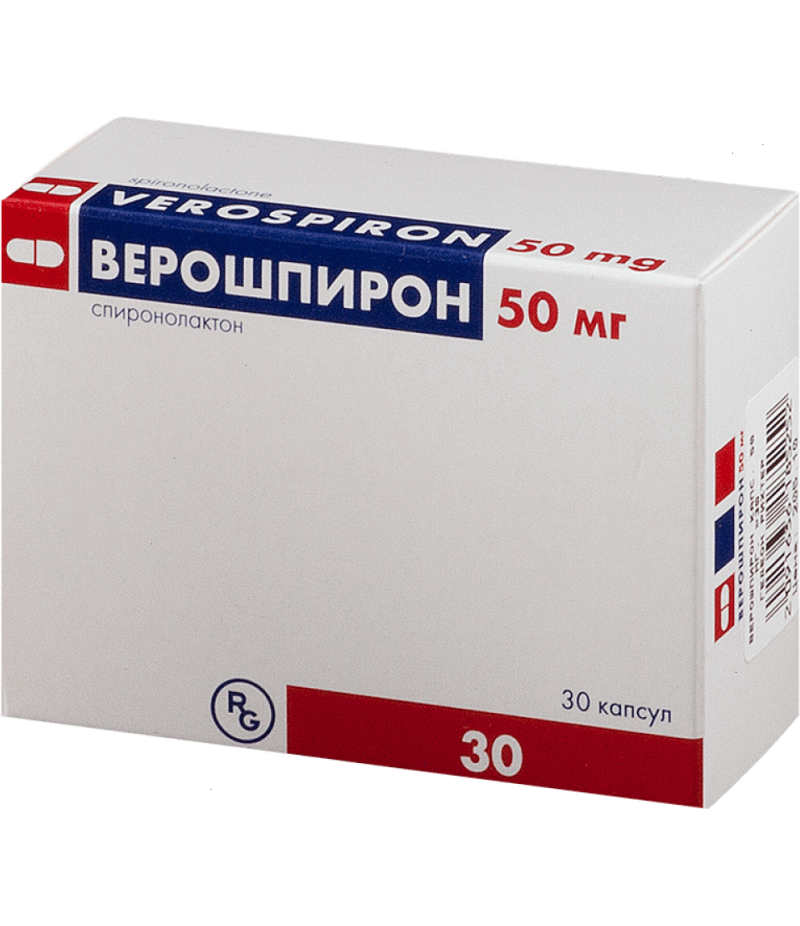Espiro tabs 25mg #30
- $34.42
- 3 or more $34.20
- Availability:In Stock
Espiro instruction for useReed more and buy Espiro hereComposition1 tab .:- eplerenone 25 mg or 50 mgexcipients: lactose monohydrate, microcrystalline cellulose, hypromellose, sodium lauryl sulfate, croscarmellose sodium, magnesiu..
Tags: tabs
Espiro instruction for use
Reed more and buy Espiro here
Composition
1 tab .:
- eplerenone 25 mg or 50 mg
excipients: lactose monohydrate, microcrystalline cellulose, hypromellose, sodium lauryl sulfate, croscarmellose sodium, magnesium stearate,
The composition of the shell Opadray yellow 33G32578, including: hypromellose, titanium dioxide (E171), lactose monohydrate, macrogol, triacetin, iron (III) yellow oxide (E172).
Description
Round-shaped tablets with a biconvex surface, film-coated yellow (for a dosage of 25 mg).
Round-shaped tablets with a biconvex surface, film-coated yellow color on one side there is a dividing risk (for a dosage of 50 mg).
pharmachologic effect
Farm group: Potassium-sparing diuretics
Pharmaceutical action
Eplerenone has a relative selectivity for mineralocorticoid receptors in humans compared to glucocorticoid, progesterone and androgenic receptors, blocks their binding to aldosterone, the key hormone of the renin-angiotensin-aldosterone system (RAAS), which participates in a group, in the group, in a group, in a group, in a group, in a group, in a group, in a specialist, in a group, in a group, in a group, in a human, and the rathorin receptor-receptor system (RAAS), which takes part in the procedure, is injected by a group, and she is a master of the human body, which is involved in the regulation of a group, and she will receive a sample, and she will have a sample, and she will have a sample, and she will take part in the procedure, and she will receive a sample. -vascular diseases.
Eplerenone causes a persistent increase in plasma renin levels and serum aldosterone levels. Subsequently, renin secretion is suppressed by aldosterone by the feedback mechanism. At the same time, an increase in renin activity or a level of circulating aldosterone does not affect the effects of eplerenone.
Pharmacokinetics
Absorption and distribution.
The absolute bioavailability of eplerenone is not known. The maximum plasma concentration is reached approximately 2 h after application. The maximum plasma concentration (Cmax) and the area under the concentration curve (AUC) are proportional to the dose in the range of 10-100 mg and less proportional when used in doses over 100 mg. Equilibrium concentration is achieved for 2 days. Food intake does not affect absorption.
The binding of eplerenone to plasma proteins is about 50%, mainly due to binding to alpha 1-acid glycoproteins. The apparent volume of distribution in the equilibrium state is 50 (± 7) l. Eplerenone does not selectively bind to red blood cells.
Metabolism and excretion.
The metabolism of eplerenone is carried out under the action of the cytochrome P-450 CYP3A4 isoenzyme. The active metabolites of eplerenone in human plasma have not been identified.
Less than 5% of the dose of eplerenone is excreted unchanged with urine and feces.
After a single oral dose of a radiolabeled drug, about 32% of the dose was excreted in the feces and about 67% in the urine. The elimination half-life in the phase of elimination of eplerenone is about 3-5 hours. Plasma clearance is about 10 l / h.
Age, Sex and Race:
The pharmacokinetics of eplerenone in men and women were not significantly different. In the elderly, the equilibrium indices Cmax (22%) and AUC (45%) were increased compared with young patients (18-45 years). The equilibrium values of Cmax and AUC in people of the Negroid race were reduced respectively by 19 and 26%.
Renal failure:
The pharmacokinetics of eplerenone were studied in patients with renal insufficiency of varying severity and in patients on hemodialysis. Compared with healthy patients, the equilibrium AUC and Cmax indices increased respectively by 38 and 24% in patients with severe renal insufficiency, and decreased by 26 and 3% respectively in patients on hemodialysis. No correlation was found between plasma eplerenone clearance and creatinine clearance. Eplerenone is not removed by hemodialysis.
Liver failure:
In patients with severe hepatic insufficiency, eplerenone has not been studied, so its use in this group of patients is contraindicated.
Heart failure:
The clearance of eplerenone in patients with heart failure is similar to that in healthy individuals.
Espiro, indications for use
- as an additional means to standard therapy using beta-blockers, in order to reduce the risk of mortality and cardiovascular morbidity in patients with a stable clinical condition with left ventricular dysfunction (LVEF [left ventricular ejection fraction] ≤40%)
- To reduce the risk of mortality and cardiovascular morbidity in patients with clinical manifestations of heart failure after a recent myocardial infarction.
Contraindications
- hypersensitivity to eplerenone or any excipient of Espiro preparation
- serum potassium level prior to treatment> 5.0 mmol / l
- moderately severe and severe renal failure (creatinine clearance <30 ml / min)
- severe hepatic impairment (Child-Pugh class C)
- simultaneous use of potassium-sparing diuretics, potassium preparations or powerful CYP3A4 inhibitors (eg, itraconazole, ketoconazole, ritonavir, nelfinavir, clarithromycin, telithromycin and nefazodone)
- in combination with inhibitors of angiotensin-converting enzyme (ACE) and angiotensin II receptor antagonists (APAII)
- children's age up to 18 years
- pregnancy, lactation
Dosage and administration
Espiro can be taken at the time or regardless of the meal. The recommended maintenance dose of Espiro is 50 mg once a day. The maximum daily dose is 50 mg.
In order to reduce the risk of mortality and cardiovascular morbidity in patients with clinical manifestations of heart failure, after a recent myocardial infarction, treatment should be started with a dose of 25 mg once a day and gradually increased, preferably within 4 weeks, until the required dose is reached 50 mg once a day, controlling serum potassium levels (see Table 1). Usually, it is advisable to start Espiro treatment within 3-14 days after the diagnosis of myocardial infarction.
In order to reduce the risk of mortality and cardiovascular morbidity in patients with a stable clinical condition with left ventricular dysfunction (LVEF [left ventricular ejection fraction] ≤40%), chronic heart failure (NYHA class II) is started with a dose of 25 mg once per day and gradually increase it, preferably within 4 weeks, until the required dose of 50 mg is reached once a day, controlling the level of potassium in the blood serum (see Table 1).
Patients whose serum potassium concentration is> 5.0 mmol / l are not recommended to start Espiro treatment.
The level of potassium in the blood serum should be determined before the start of drug treatment, during the first week and one month after the start of application or dose adjustment. In the future, the level of potassium in the serum should be monitored periodically, as needed.
After initiation of therapy, the dose should be adjusted to the level of potassium in the blood serum, as indicated in the table.
Potassium in serum Potassium in serum 5.0-5.4 mmol / l: No change in dose.
Potassium in serum 5.5-5.9 mmol / l: Reduce the dose - from 50 mg 1 time / day. up to 25 mg 1 time per day; with 25 mg 1 time / day. up to 25 mg every other day; from 25 mg every other day until withdrawal.
Potassium in serum> 6.0 mmol / l: Discontinuation of Espiro.
If Espiro is canceled due to an increase in serum potassium concentration ≥ 6.0 mmol / l, repeated use of Espiro at a dose of 25 mg is possible every other day if the concentration of potassium in blood serum is less than 5.0 mmol / l.
Use in children and adolescents.
There is no data on the use of eplerenone in children, so the use of a medicinal product in this group of patients is not recommended.
Use in the elderly
Correction of the initial dose for the elderly is not required. Due to age-related impairment of renal function, the risk of hyperkalemia in older people is higher. It may further increase due to comorbidities that increase the concentration of Espiro product in the body, especially mild or moderate liver dysfunction. It is recommended to periodically monitor the level of potassium in the serum.
Use in patients with renal failure
Correction of the initial dose in patients with mild renal impairment is not required. It is recommended to periodically monitor the level of potassium in the serum.
Eplerenone is not removed by dialysis.
Use in patients with liver failure
Correction of the initial dose in patients with mild or moderate liver dysfunction is not required. Considering the increase in the concentration of eplerenone in the body of such patients, it is recommended to frequently and regularly monitor the concentration of potassium in the blood serum, especially in elderly patients.
Use in patients taking other drugs
With the simultaneous use of mild or moderate inhibitors of CYP3A4, for example, amiodarone, diltiazem and verapamil, treatment should be started with a dose of 25 mg once a day. The dose should not exceed 25 mg once a day.
Side effects of Espiro
Often (≥1 / 100 to - infection
- hyperkalemia
- dizziness, syncope
- arterial hypotension
- cough
- diarrhea, nausea, constipation
- rash, itching
- impaired renal function
Infrequently (> 1/1 000 before - pyelonephritis
- eosinophilia
- hypothyroidism
- hyponatremia, dehydration, hypercholesterolemia, hypertriglyceridemia
- insomnia
- headache, hypesthesia
- myocardial infarction, left ventricular heart failure, atrial fibrillation, tachycardia
- Thrombosis of the arteries of the lower extremities, orthostatic hypotension
- pharyngitis
- vomiting, flatulence
- increased sweating
- pain in the back, painful cramps of the gastrocnemius muscles
- cholecystitis
- gynecomastia
- asthenia, malaise
- an increase in the level of urea nitrogen, creatinine, blood glucose, a decrease in the level of the epidermal growth factor receptor.
Frequency not known:
- angioedema
Terms of sell
You don't need a prescription from a doctor to buy Espiro.




